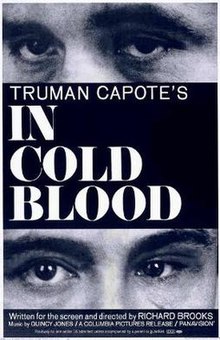This piece was originally published in June 2009.
Growing up, my family and I vacationed in an Upstate New York cabin. A lake spread out, cold and tranquil, just across a gravel road. Hiking trails looped through the woods, a nature center offered pamphlets and kayaks, and our neighbors let us borrow their canoe. Did I visit the nature center to learn about the flora and fauna? No. Did I water ski? Not unless wheedled into it. Did I hike trails? Borrow the canoe? Maybe once or twice. How did I amuse myself on our wonderfully nature-y vacations? I brought a stack of books, sat in the damp, dark cabin and read.
Having forfeited pleasures of nature for worlds of fiction and creative nonfiction, I am here to recommend three books that are perfect to pack if you’re planning a mountain- or lake-side vacation this autumn. They are not cutting-edge; rather, they are books I am recommending because the forest setting will amplify their worth.

Why it’s good: One of the intriguing things about small-town life is that places have layers and layers of stories. If a visitor asks why a mom-and-pop store is sitting vacant, she may find it used to be the hub of the town, but the family suffered a tragedy, mom-and-pop split up, and another family tried to start a new store there but no one came. Richard Russo captures this layered aspect of small town life perfectly, setting much of Empire Falls in the Empire Grill, a diner that Miles Roby, a divorced man in his forties, wants to sell but keeps managing at the demand of Francine Whiting, who owns most of the town. The stories of those who frequent the diner spin out from the setting, leading to compelling character studies and page-turning action.
Why it’s even better in a cabin in the woods: No doubt the cabin is near some small town or other, and Russo will get you thinking about the stories that fill the diners, gas stations, schools, and taverns.
2. Alice Munro’s The Love of a Good Woman.
 Why it’s good: Munro creates characters who live and breathe. In them, you may recognize parts of yourself or true, deep aspects of people you know. Munro lets characters develop slowly and richly and lets plots resolve in a measured and satisfying way, the way a simmering sauce will suddenly reach its best flavor. In this collection, the resolutions are still measured and satisfying, yet more jolting and revealing than usual, especially in “Rich as Stink,” “Save the Reaper,” and the title story.
Why it’s good: Munro creates characters who live and breathe. In them, you may recognize parts of yourself or true, deep aspects of people you know. Munro lets characters develop slowly and richly and lets plots resolve in a measured and satisfying way, the way a simmering sauce will suddenly reach its best flavor. In this collection, the resolutions are still measured and satisfying, yet more jolting and revealing than usual, especially in “Rich as Stink,” “Save the Reaper,” and the title story.
Why it’s even better in a cabin in the woods: Munro sets many of these characters in small towns, forests, and vacation spots in Canada, and many developments happen specifically because characters are away from home. Also, since they are short stories, they are easy to read in one afternoon, and there are good stopping points in case someone cajoles you into water skiing.
1. Truman Capote’s In Cold Blood.
Why it’s good: Not only is this a page-turner, but Truman Capote invented a genre while he was writing. Amazing.
 Why it’s even better in a cabin in the woods: No doubt many folks dusted this off when the film Capote came out. It’s intensely disturbing that these crimes were random, springing from misinformation about the profit the murderers would reap. But the most terrifying thing about this nonfiction novel is its reminder that the safest, most unlikely place can become a setting for gruesome killings. If you haven’t read this in an isolated setting, this book hasn’t had its full effect.
Why it’s even better in a cabin in the woods: No doubt many folks dusted this off when the film Capote came out. It’s intensely disturbing that these crimes were random, springing from misinformation about the profit the murderers would reap. But the most terrifying thing about this nonfiction novel is its reminder that the safest, most unlikely place can become a setting for gruesome killings. If you haven’t read this in an isolated setting, this book hasn’t had its full effect.
So, here’s to an autumnof great books, a dash of nature, and safety and serenity the woods.
Alice Munro Literature Richard Russo Truman Capote vacations